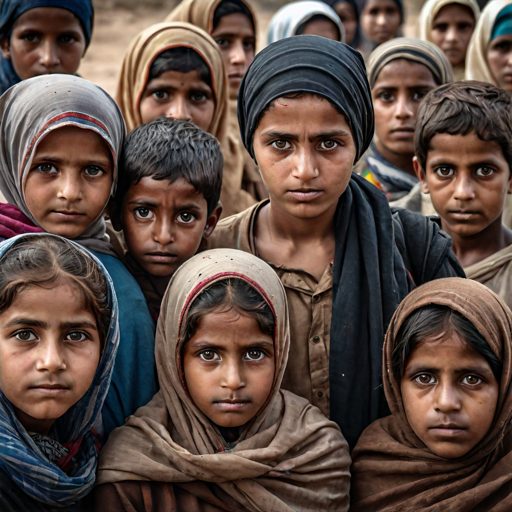

Refugees: Seeking Shelter, Seeking Equality
Should refugees be given the same rights as natural citizens?
A ‘refugee’ is a wide term which often includes asylum seekers, forcibly displaced, and internally displaced people
By May 2023, about 110 million people were forcefully displaced and this number continues to grow.
• About 35.3 million were refugees
• 62.5 million were internally displaced
• 5.4 million became asylum seekers
• And 5.2 million in need of international protection
(United Nations High Commissioner for Refugees).
Who is a refugee?
Refugees are people who have fled their nation because of war, persecution, natural disasters, etc.
Evidence shows that developing countries are quite common to host refugees, including Iran, Turkey, and Pakistan (United Nations High Commissioner for Refugees) ¹. Thus, as more refugees are displaced in developing countries, they are often prone to fewer rights and mistreatment.
They often do not receive protection against violence, lack resources such as food, water, a safe and secure house/shelter, or provided with employment. All of which are fundamental rights in every country (Oxfam International).
This raises the question: If the refugees are accepted by any nation, should they receive the same rights as natural citizens and how can countries provide well for their refugees?
What are Fundamental Rights of Refugees?:
Fundamental rights are rights given to people of a country by the constitution (Study.Com). These are rights that one needs for their basic need, including life and liberty, freedom of slavery, freedom of speech, right to employment, education, etc. These rights are the ones that cannot be taken (United Nations).
In the case of refugees however, these rights are often abused and taken away. Whether it’s what caused them to flee, or what happens to them in the country they seek shelter in. Let’s take a look at the multiple countries that host refugees to see if they treat their refugees right and offer proper rights to them.
Global Perspective:
Without a doubt, countries have made numerous actions and multiple treaties to help with the refugee case. These include 1951 Convention Relating to the Status of Refugees with its amendment made of the 1967 Protocol. About 149 countries had joined this Convention. The Convention and the Protocol define what the term ‘refugee’ means and highlights their basic rights, treatment, and their protection. It also defines the legal obligations that the countries must follow.
The Convention was drawn due to the millions displaced during the Second World War, from which it was decided to form codes and rights relating to refugees on a global platform. The 1967 Protocol however, went into more depth as to how to protect the refugees (United Nations High Commissioner for Refugees).
The Convention ended up to make a major difference in the international law relating to refugee rights. It even created the definition for the term ‘refugee’ (Asylum Access). According to the High Commissioner of Refugees, millions of lives have been saved due to the convention. And as that may be, there are still multiple other millions who have been forcibly displaced in other countries.
Case Studies: Iran and Turkey
Iran and Turkey have been major countries in receiving refugees, with Turkey hosting refugees since years and Iran becoming the largest country receiving refugees during mid-2023(Statista and International Rescue Committee). This is because both the countries have nations around them at war.
Iran is a signatory to the 1951 Convention while also forming The Solutions Strategy for Afghan Refugees (SSAR). It highlights the basic framework for how refugees must be treated in Iran. The SSAR was formed in 2011 to protect the refugees with three main objectives: making it possible for the refugee to move back to their country of origin if they would want to, supporting the refugees to move back to the country, and supporting the two most Afghan receiving countries: Iran and Pakistan.
This is due to the many Afghans who sought refuge from Afghanistan and so a global effort to build solutions was formed (Global Compact on Refugees). While one the front it seems that Iran does well to host its refugees, many sources say otherwise. Numerous cases of lack of rights and mistreatment of refugees have been reported. Iranian authorities have violated one’s freedom of speech, assembly, and expression.
The Security Forces themselves in Iran used arms such as shot guns, handguns, and rifles against protestors. Upon that, authorities displayed a lack of interest to look into the violation of rights committed against the refugees. Furthermore, the Iranian laws prevents freedom of religion and often discriminates (Human Rights Watch).
Looking at another major receiver of refugees, as of 2023 Turkey hosts 3.6-4 million refugees. Most of which are Syrians, escaping the war ongoing in their country (Relief Web). The country has done fairly well to provide for their refugees, as compared to Iran. They not only provide their refugees with the basic rights they deserve, but offer their refugees protection, no forced returns, and an unlimited time to remain in the country.
With the Syrian war not coming to an end, the number of Syrians who have earlier migrated to Turkey are slowly returning. About 527,000 Syrians returned to Syria by the time of October 2022. (Migration Policy Institute)
What about a more developed country, now that we have seen how developing countries handle the issue. Germany is a signatory to the 1951 Convention and was one of the first six states globally that signed the Convention (United Nations High Commissioner for Refugees).
A Developed Nation’s Approach: Germany
Germany is another country which receives one of the highest number of refugees in the world. Germany hosts a total of 2.2 million refugees which has said to be increased since the Russia-Ukraine war, with multiple Ukrainians seeking protection in Germany.
Germany receives refugees from all around including Syria, Ukraine, Afghanistan, Myanmar, and even Venezuela. Upon that, Germany offers all its fundamental rights to refugees and has a strong base and structure, and has formal laws in place, treating their refugees well.
Due to Germany giving their refugees proper opportunities and care (such as providing employment opportunities), they have seen a positive increase in their economy too (Global Focus- UNHCR).
National Perspective on Refugee Rights:
So how does India do, relating to refugees and their rights? India’s neighbouring countries are either poor, at war, or both. By 2022, the population of refugees in India was 242,835 which was about a 14% increase from the number of refugees in 2021 (Macro Trends). India receives the highest number of refugees from Myanmar and Afghanistan (United Nations High Commissioner for Refugees).
Despite getting many refugees, India is not a signatory to the 1951 Convention along with its 1967 Protocol. Meaning India has no formal laws or a global treaty signing their obligations towards refugees. While India has also been given the recognition as being a good place for refugees, the missing formal laws provide a weak base for treating the refugees and have no standard procedure to treat the refugees.
India does have a 1946 Foreigners Act which deals with the treatment of non-citizens of India. However, it does not have a ‘refugee’ category, taking away specific rights. This allows the government to handle refugees in the same way they would handle undocumented migrants and foreigners. This leads to misunderstandings and mistreatment of many refugees (Stimson).
Personal Perspective:
I believe that refugees should be given and provided with the same fundamental rights provided to natural citizens. In some cases that we have seen (Iran), we can see clear mistreatment of refugees and how they are violated from their basic human rights.
Ones fundamental right includes right to live, right to freedom of speech and assembly, right to freedom of religion, etc. These rights form the base of one’s life without which, one may not be able to live freely. At the end of the day, refugees are humans too, and just like us and deserve to be treated with respect, care, and proper treatment.
Countries that have signed a convention and made an obligation to take care of refugees should step up and abide to their responsibilities and commitments.
The countries who have not, should implement a framework around the admission of refugees, and their rights, after accepting them. They should have a process in place to work with other governments for voluntary repatriation.
Course Of Action For Refugees:
We cannot make a new convention or treaty, because although it may be effective, not all countries shall sign it like India hadn’t signed the 1951 Convention, nor can we guarantee that every country will follow along with it. So, the best thing to do is to improve the standard from how it already is in host countries.
• The first thing to do would be to ensure that there are formal laws of refugees that have already been put into place in the country.
• Proper infrastructure should also be implemented, including proper shelter and proper medical facilities.
• One country cannot receive all refugees, like Iran cannot host all Afghans, and India cannot host all Rohingyas.
We have seen that when that happens, there is often lack of space, housing, food and, water. Thus, there should be a refugee communication line between countries, deciding if countries can have the space to take the refugees, so refugees should not be clustered in only one area.
• providing a proper supply of food, water, and clothes
• no forced repatriation, only voluntary repatriation.
• Providing employment opportunities
• And then overall, the fundamental rights should be properly implemented and they should receive the same comfort and security as regular citizens do.
• Countries can introduce some minimum years of stay criteria to provide rights of higher order like the right to vote, citizenship and have own property etc.
Conclusion:
We have visited multiple perspectives to each country, especially the ones which have the highest numbers of refugees. We have seen multiple laws and also the Conventions which have more or less, impacted refugees in a positive manner. We have seen how countries treat their refugees.
We have also seen the actions of the governments, how it effected the refugees, and the consequences to it all. So to conclude, we would say that the mistreatment of humans and people, is what causes them to be refugees and we shouldn’t push the mistreatment further, if where they reached is to improve their well-being.
After all, shouldn’t refugees be treated as people and not burdens?
Discover more of Sanaa Celly’s brilliant writing
- What art means to me
- Should Zoos Exist? The Debate about Animal Captivity
- Why Racism Persists: A Deeply Rooted Problem
- Illuminati Sign
Curious Times is a leading newspaper and website for kids. We publish daily global news aligned to your learning levels (also as per NEP 2020): Foundational, Preparatory (Primary), Middle and Senior. So, check out the News tab for this. We bring kids’ favourite Curious Times Weekly newspaper every weekend with top news, feature stories and kids’ contributions.
ME – My Expressions at Curious Times is your place to get your work published, building your quality digital footprint. And it is a good way to share your talent and skills with your friends, family, school, teachers and the world. Thus, as you will step into higher educational institutes your published content will showcase your strength.
Communicate with us: Instagram.
1 (Please login to give a Curious Clap to your friend.)
SignUp to Participate Now! Win Certifiates and Prizes.



[…] Refugees: Seeking Shelter, Seeking Equality […]
[…] Refugees: Seeking Shelter, Seeking Equality […]
[…] Refugees: Seeking Shelter, Seeking Equality […]
[…] Refugees: Seeking Shelter, Seeking Equality […]